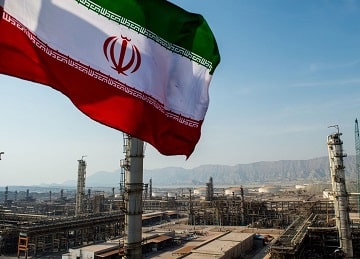
How to export products to Iran?
Let’s talk about how to export products to Iran. The country's total population exceeds 81 million, and the urban population accounts for 73.4% of the total population. The average Gini coefficient of income distribution is 44.5.
As most of the sanctions on Iran are lifted, there are more and more opportunities to export a variety of goods to Iran. A local representative is always needed.
What products and services do people import to Iran?
-
Industrial supplies
-
Capital goods
-
Food and other consumer goods
-
Technical services
Iran's largest importing partner (% of total imports)
-
United Arab Emirates (29.8%)
-
China (12.7%)
-
Algeria (8.44%)
-
South Korea (4.0%)
-
Turkey (4.4%)
What are the largest cargo airports in Iran?
-
Tehran Imam Khomeini International Airport
-
Payam Airport
Most of Iran's commercial goods are transported by sea.
What is the largest container port in Iran?
Iran's leading container port is Shahid Rajaee.
Exporting and importing your products to Iran
Importing into Iran requires some knowledge and experience, especially knowledge and experience on prohibited items. Here are some basic guidelines on the procedure, but the ideal way to start exporting to the country for the first time is to use a local branch or an export expert.
Products imported into Iran are divided into three categories:
-
Allowed products that do not require a license
-
Conditional products that can only be imported with a license
-
Prohibited products that are strictly prohibited by Islamic law or general law
Once the product is classified, the Iranian Chamber of Commerce and Industry will issue a business card. An import license is also required.
How to export products to Iran? Import Duties and Taxes
The CIF system is used to value merchandise entering Iran. On this basis, registration fees and other fees are collected. Exporters must also produce documents related to the imported goods, such as the original, because the total import cost is calculated at a floating exchange rate. Import and Export regulations of Iran seem a bit difficult, but they are not.
Duty-free goods include agricultural machinery used in animal husbandry. Certain items, such as road and mining industrial machinery, scientific, technical, or research instruments or raw materials, such as base metals and chemical products, may receive special exemptions determined by the harmonized coding system.
What is the distribution structure of Iran?
Iran’s distribution network consists of wholesalers, retailers, organized buyers, exclusive representatives, and auctioneers. Most of these people are familiar with Import and Export regulations.
Global brands gradually began to enter this market after the sanctions were lifted. However, lack of knowledge of appropriate distribution channels, comprehensive understanding of target audiences, and long distances from the market are common problems affecting new players in the international trade market.
Due to the complexity of Iran, it is essential to conduct international trade market research to determine the correct industry, strategy, and distribution method for your product. If you require any help on how to export products to Iran? Call us at Gereh Market, and we can help you out.
